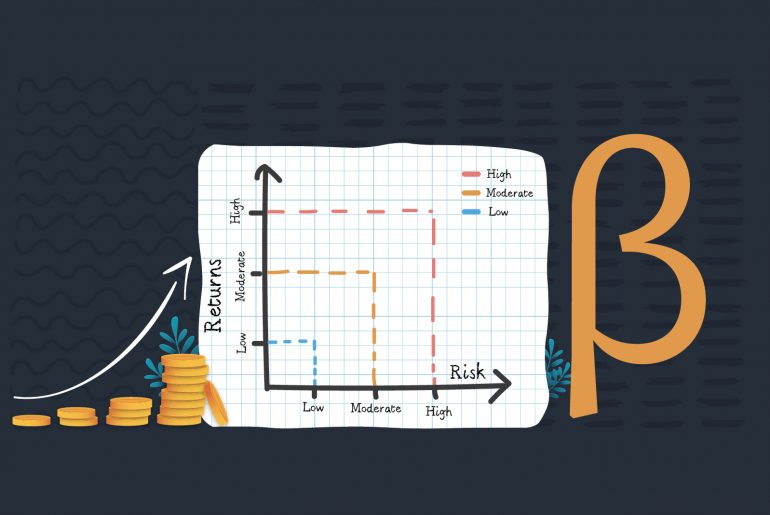Gold, a timeless symbol of wealth, remains a smart choice for portfolio diversification. Whether you are an investing pro or a beginner, a question that strikes when talking about gold is – How to invest in gold? In this beginner’s guide, let’s explore why you should consider investing in gold, how to invest in different types of gold investment, the key risks of investing in gold, minimum investment requirements, and more. Let’s dive in.
Table of Contents
5 reasons to consider investing in gold
Here are five reasons in brief as to why you should consider investing in gold.
Evergreen investment: When you invest in gold, your investment grows with time. Gold does not deteriorate or lose its value with age; old gold ornaments hold the same market value as new ones.
Protection against inflation risks: Gold acts as a hedge against inflation. Historical observations have demonstrated that gold has consistently outperformed the inflation rate, making it an attractive option for risk reduction.
Investment for the future: Investing in physical gold provides an excellent way to save money for the future, as it offers the potential for good returns in the long run.
Easy to buy and sell: Gold can be easily purchased from trusted sources such as jewellery stores or banks and sold to local jewellers or traders for immediate cash. It is a liquid asset that is always in demand.
Collateral for loans: Gold can be used to secure loans from banks and financial institutions in emergencies. These loans usually have lower interest rates.
Consider reading this article to know more about the reasons to invest in gold.
Gold investment options in India
There are various types of gold investment options available in India. Let’s explore all of them.
Digital gold
Convenient and cost-effective, digital gold is an alternative to physical gold. It allows you to buy and sell gold online in fractions, starting from as little as Re. 1. Digital gold is 24K and comes with 99.99% purity, reducing the chances of fraud. It offers features like easy liquidity, secure storage, and zero making charges. Moreover, it is one of the most popular investment options in the gold segment.
Availability: Easily accessible through online platforms, allowing you to buy and sell gold anytime, anywhere.
Credibility: Backed by physical 24k gold and linked to real-time prices, ensuring transparency and authenticity.
Cost: Low investment thresholds, starting from as little as Re. 1, making it affordable for all.
Maintenance: No physical storage or maintenance is required as digital gold is securely stored on the platform.
Taxes: Capital gains tax is applicable upon selling digital gold based on the holding period.
Benefit: Potential for steady growth in value with the fluctuation of gold prices.
Now, let’s look at the different types of digital gold investment options available in India.
Sovereign Gold Bonds (SGBs)
Launched by the Government of India, SGBs are a type of digital gold that eliminates several risks associated with physical gold. It comes with hassle-free transferability and traceability. In every fiscal year, Government issues SGBs in tranches, which refer to a specific period during which a portion of bonds is made available for investors to subscribe to. For example, there were four tranches during which SGBs were issued in 2022-2023:
| S. No. | Tranche | Subscription Period | Date Of Issuance | Price Per Gram (in Rs.) |
| 1 | 2022-23 Series I | 20th June – 24th June 2022 | 28th June 2022 | 5,041 |
| 2 | 2022-23 Series II | 22nd August – 26th August 2022 | 30th August 2022 | 5,091 |
| 3 | 2022-23 Series III | 19th December – 23rd December 2022 | 27th December 2022 | 5,409 |
| 4 | 2022-23 Series IV | 6th March – 10th March 2023 | 14th March 2023 | 5,611 |
Availability: Issued periodically by the Reserve Bank of India.
Credibility: It is backed by the Indian Government, ensuring credibility and reliability.
Cost: No making charges or storage costs involved.
Maintenance: Bonds have a lock-in period with no physical gold to maintain.
Taxes: Interest earned is taxable as per the income tax slab; no capital gains tax upon maturity. The indexation benefits are available as well.
Benefit: Assured interest and the potential for capital appreciation, providing stable returns.
How to invest in Sovereign Gold Bonds online?
Investing in SGBs is a straightforward process at designated banks. To apply, you can visit the designated bank’s website and navigate to the ‘Investment’ section, where you will find the SGB application. The application process may vary slightly between banks, but the overall steps remain the same.
Alternatively, if you prefer to apply physically, you can collect subscription forms from the designated banks. Fill out the forms accurately and submit them along with your payment. It is important to provide your PAN/Aadhaar Cards as part of the KYC verification process. Once verified, the bonds will be issued to you.
Investing in SGBs offers you a convenient way to own gold with the assurance of the Indian government. The subscription for the first tranche for the year 2023 – 2024 is already completed between 19th June 2023 to 23rd June 2023. The issue price was Rs. 5,926 per gram (Rs. 5,876 per gram for digital mode payments) for a tenure of 8 yrs.
Gold Exchange Traded Funds (ETFs)
Gold ETFs are investment instruments that track domestic gold prices and are traded on stock exchanges. It represents the physical gold in the electronic format while maintaining high quality and purity. Gold ETFs can be traded like stocks; you receive the cash equivalent when you redeem them. It offers transparency and the convenience of trading through a Demat account/broker.
Availability: Traded on stock exchanges, allowing easy access to gold investments.
Credibility: ETFs are regulated financial instruments, providing transparency and credibility.
Cost: Involves brokerage fees and expense ratios associated with ETFs.
Maintenance: No physical gold storage or maintenance is required.
Taxes: Capital gains tax is applicable upon selling ETF units based on the holding period.
Benefit: Offers flexibility, liquidity, and ease of trading compared to physical gold.
How to invest in gold ETFs?
Discover the best Gold ETFs with Tickertape’s Stock Screener based on metrics that matter to you. Add filters like expense ratio and sort it from low to high if you are looking for a low-costing Gold ETF. Adding a tracking error filter will help you identify ETFs that are deviating from the benchmark and those that are performing in line with it. Likewise, there are other filters related to risk, returns, and so on that you can add to the screener to get Gold ETFs in 2023.
Evaluate Gold ETFs with Tickertape’s ETF Pages
Once you have a list of the top Gold ETFs, you can evaluate these individually using Tickertape’s ETF Pages. Let us launch the Kotak Nifty 50 ETF as an example. Follow these steps:
- Go to the Tickertape website or app.
- Look for your desired ETF in the search box.
- When on the ETF page, you can see an investment checklist on the left-hand side. This gives you a bird’s eye view of the ETF.
- Next, in the overview tab of Kotak Nifty 50 ETF, you can see the real-time NAV for various periods like 1 Day, 1 Week, 1 Month, and 1 Year, the asset class of underlying securities, and the type of indices the ETF is tracking. The overview tab also mentions the key metrics in addition to the expense ratio and tracking error, AUM of the ETF, and profile of the Asset Management Company.
But what really sets Tickertape’s ETF Pages apart from others is its “Peers” tab, where you can compare the ETF with its peers based on expense ratio, tracking error, and liquidity. You can also compare the price trend of two or more ETFs or with a sing stock for your desired period.
Explore and invest in Gold ETFs with Tickertape now!
Gold Mutual Funds
A type of mutual fund that invests directly or indirectly in gold reserves, including stocks, is referred to as a gold mutual fund. They are a convenient way to invest in gold without owing the physical gold. They are open-ended investments based on units provided by gold ETFs. Their value is tied to the price of physical gold.
Availability: Accessible through mutual fund companies and investment platforms.
Credibility: Managed by professional fund managers, ensuring expertise and credibility.
Cost: The expense ratio associated with managing the mutual fund; varies among different funds.
Maintenance: No physical gold maintenance is required as the fund holds gold-related assets.
Taxes: Capital gains tax is applicable upon selling mutual fund units based on the holding period.
Benefit: Offers diversification, liquidity, and the potential to earn returns based on gold market performance. Also, serve as a hedge against economic shocks.
How to invest in gold mutual funds?
Investing in gold mutual funds provides individuals with an opportunity to gain exposure to the gold market through professionally managed funds. To get started, one should begin by researching reputable mutual fund companies that offer gold funds. For this purpose, Tickertape Mutual Fund Screener offers over 50 filters, pre-built screens, custom filters, a custom universe, and more.
To analyse gold mutual funds on Tickertape, follow the below-mentioned steps.
Step 1: Go to Tickertape Mutual Fund Screener.
Step 2: Under ‘Sector’, go to ‘Commodity’, and select ‘FoFs – Gold’.
Now you can add from over 50 filters to get the list of gold mutual funds based on your preferred criteria.
Once a suitable company is chosen, an investment account needs to be opened either directly with the company or through a brokerage platform. After determining the investment amount based on personal goals and risk tolerance, investors can select a specific gold mutual fund within the company’s offerings. The next step involves filling out an application form with accurate information and funding the investment through a preferred method.
It is important to monitor the performance of the investment regularly and make adjustments as needed. Consulting a financial advisor can provide personalised guidance and ensure the suitability of the investment strategy.
Now that we have covered digital gold options, let’s explore other gold investment instruments.
Gold Jewellery
Around half of all gold mined, ~49%, is made into jewellery. Though digital gold is becoming popular due to its cultural significance, gold jewellery is considered a safe and go-to investment by many individuals in India. It is treated as one of the cherished assets.
Availability: Easily available through jewellers across India, catering to diverse preferences.
Credibility: Choose trusted jewellers with a reputation for quality and authenticity.
Cost: Involves making charges, which can vary depending on the design and intricacy.
Maintenance: Requires safe storage, periodic cleaning, and maintenance to retain value.
Taxes: Capital gains tax is applicable upon selling jewellery based on the prevailing gold price.
Benefit: Combines cultural significance, emotional value, and potential appreciation over time.
Gold coins or bars
If you intend to add physical gold to your portfolio but want to spend less on making charges of gold jewellery, then gold coins or bars are one of the best options. These don’t require skilled artistry. Gold coins or bars are tangible assets and are considered ideal for long-term investment.
Availability: Widely available through jewellers, banks, e-commerce websites, and non-banking finance companies.
Credibility: Physical gold in the form of coins or bars provides tangible ownership and can be verified for purity.
Cost: Making charges are minimal or absent for coins or bars, allowing you to save on additional expenses.
Maintenance: Requires safe storage and periodic maintenance to prevent damage or loss.
Taxes: Capital gains tax is applicable upon selling gold coins or bars based on the holding period.
Benefit: Offers long-term investment stability and the potential for capital appreciation.
Gold Savings Schemes
A gold deposit or saving scheme is offered by jewellers in India. It allows you to deposit your gold and earn more and earn a higher quantity of gold by the end of a year. Further, it allows you to invest in gold through regular deposits. The purpose of this scheme is to mobilise the gold, making it available for banks on loans. It reduces the dependence on imported gold and conserves foreign exchange. Each jeweller may have their own version of the scheme, with some offering monthly payments and returning your gold at the end of the term.
Availability: Offered by jewellers across India, providing an instalment-based investment option.
Credibility: Established jewellers ensure credibility and reliable gold purchases.
Cost: Requires regular monthly deposits, enabling investors to accumulate gold gradually.
Maintenance: No additional maintenance is required; gold can be redeemed at the end of the tenure.
Taxes: Capital gains tax is applicable upon selling the purchased gold at the prevailing market price.
Benefit: Earns bonus benefits and allows systematic accumulation of gold over time.
Key risks of investing in gold
When you are making investment decisions, it is crucial to consider the risks involved with the investment instruments. Here are the potential risks involved in each of the gold investment options available in India in brief.
| Investment Instrument | Risks |
| Digital Gold | Market volatility and fluctuation in gold prices |
| Gold Sovereign Bonds | Interest rate risk and the possibility of lower returns |
| Gold Exchange Traded Funds | Market risks and volatility affecting ETF performance |
| Gold Mutual Funds | Market risks and performance linked to the gold industry |
| Gold jewellery | Potential loss of value due to changing fashion trends |
| Gold coins or bars | Risk of theft, damage, or loss of physical gold |
| Gold Savings Schemes | Dependence on the jeweller and scheme terms and conditions |
Consider the risks associated with each investment instrument, such as market volatility, theft or damage, dependence on jeweller terms, interest rate fluctuations, market risks, and changing fashion trends, when making your investment decision.
Minimum investment requirements
Based on the type of gold investment, the minimum investment value varies. Let’s briefly look at the minimum investment required for each gold investment option in India.
| Investment instruments | Minimum Investment Amount |
| Digital Gold | Re. 1 |
| Gold Sovereign Bonds | Price of 1 gm of gold |
| Gold Exchange Traded Funds | Varies (depending on the ETF) |
| Gold Mutual Funds | Varies (depending on the fund) |
| Jewellery | Varies (depending on the piece, design, and price of 1gm of gold) |
| Gold Coins or Bars | Varies (depending on weight and purity) |
| Gold Savings Schemes | Varies (depending on scheme and jeweller) |
Now that if you are wondering ‘What is the gold price today?’, then wonder no further. As of 12th June 2023, the price of 1 gm of 22K gold is Rs. 5,640 in Delhi. Please note that before investing in the abovementioned gold investment options, check the updated price of gold for the day and place.
Tax rates for gold investment
Here are tax rates for different gold investments in brief.
| Investment Instrument | Taxation |
| Digital Gold | Capital gains tax on selling based on the holding period |
| Gold Sovereign Bonds | Capital gains tax on selling based on the holding period |
| Gold Exchange Traded Funds | Capital gains tax on selling at the prevailing market price |
| Gold Mutual Funds | Interest earned is taxable as per income tax slab; no capital gains tax on maturity |
| Jewellry and gold coins/bars | Short-term capital gains tax (holding period less than 36 months): As per individual’s income tax slab rate; Long-term capital gains tax (holding period more than 36 months): 20% with indexation benefit |
| Gold Savings Schemes | Capital gains tax on selling jewellery based on prevailing gold price |
Conclusion
Now, you must be wondering, ‘Am I ready to invest in gold as I have completed the beginner’s guide?’ Well, the answer to this question is yes and no. You are well-versed with different types of gold investment options available in India. But to find out if gold investment is suitable for your portfolio, you must seek professional help. In case you are interested in Gold ETFs and Mutual Funds, you can track and analyse them using Tickertape Screener. Explore over 200 filters, pre-built screens, custom filters, universes, and more now!
FAQs
Is gold a liquid asset?
Yes, gold is considered a liquid asset. It is considered highly liquid because it is actively traded in various forms, such as gold bars, coins, jewellery, and exchange-traded funds (ETFs).
Do I have to pay income tax on gifts or inheritance of gold?
Gold received as a gift or inheritance from a relative (spouse, children, parents) is tax-exempt under Section 56(2) of the Income Tax Act. However, gold received as gifts or inheritance from any other person exceeding INR 50,000 is taxable under Income from Other Sources and Taxes (IFOS) at slab rates. Gold received as a gift on the occasion of marriage is tax-exempt. If the taxpayer sells the gifted or inherited gold, it is considered income from capital gains and taxed accordingly. The sender is responsible for reporting income from the transfer of gold and paying tax at the applicable rates.
What are the income tax rules for Non-Resident Indians (NRIs)?
NRIs can invest in all forms of gold investments except Sovereign Gold Bonds (SGBs). The tax rules for selling gold investments are the same for NRIs as for residents. However, NRIs are subject to TDS on the redemption of Gold ETFs and Gold Mutual Funds:
- 20% TDS on redemption of Long Term Gold ETFs and Mutual Funds
- 30% TDS on redemption of Short Term Gold ETFs and Mutual Funds.
- Best EV Stocks in India (2025): Electric Vehicle Companies - Apr 11, 2025
- List of Best Growth Stocks on NSE: Fast-Growing Companies in India - Apr 11, 2025
- Potential Breakout Stocks in India: High Volume Shares on NSE - Apr 11, 2025




